Bob speaks with “The Outsider” co-director Steve Rosenbaum about his film documenting the fraught creation of the National September 11 Memorial & Museum
TEDDY ROOSEVELT: Surely there never was a fight better worth making than the one which we are in.
GARFIELD: Welcome to Bully Pulpit. That was Teddy Roosevelt, I'm Bob Garfield. Episode 8: The Outsider.
It has been twenty years since the bloody horrors of September 11th, 2001 scarred lower Manhattan and the American psyche. Within three years of the terror acts that claimed nearly 3,000 innocent lives, plans were underway to commemorate the fateful day and its events for posterity. The National 9/11 Memorial & Museum would be constructed on the hallowed footprint of the atrocity. A decade later, the half-billion dollar project would be opened to the public. Here was President Barack Obama at the dedication ceremony:
OBAMA: A nation that stands tall and united and unafraid -- because no act of terror can match the strength or the character of our country. Like the great wall and bedrock that embrace us today, nothing can ever break us; nothing can change who we are as Americans.
GARFIELD: That was perhaps a fitting tribute to a new national shrine, the memorial part of the project that must necessarily dwell in the grief, the sacrifice, the heroism that so dominate the 9/11 narrative. But what Obama left out was the museum part and its role of exploration, illumination and inquiry, such as where do those acts of terror and their bloody toll fit into the broader sweep of history, into America's story, into our understanding of human events before and since? If the dedication ceremony was appropriately a moment for communion and remembrance and resolve, surely the ongoing work of the museum would go beyond the heroism and sacrifice to the complex history and geopolitics that led to 9/11 evil.
SHULAN: One of the key meta narratives of this exhibition, one of the most important things about this exhibition, is to say to people, “Use your eyes, look around you, look at the world and understand what you're seeing.” And if we don't do that with the material that we're presenting to people, then how can we give them that message? How will that message ever get through?
GARFIELD: A new documentary by husband and wife filmmakers Pam Yoder and Steve Rosenbaum offers an inside view of the creation of the 9/11 Museum. It tells the story of the storytellers as they labor for a decade, collecting artifacts, designing exhibits, and editing the narratives flowing from that fateful day. And its protagonist was a relatively minor character who was propelled by internal conflict among the museum's planners into a central role in this story. The film is called “The Outsider,” available on Amazon Prime, Apple TV, Vudu, Facebook and other platforms. Steve Rosenbaum joins me now. Steve, welcome to Bully Pulpit.
ROSENBAUM: I am so glad to be here, because I've always wanted to be on a bully pulpit.
GARFIELD: Uh huh. Well, congratulations. You have achieved your dream, perhaps your destiny. OK, first, a whole lot of disclosure. You and I have been friends for most of our adult lives, so about 100 years, and I've been following your progress in getting this movie made for a long time. And furthermore, at more or less the last minute this summer, I stepped in to help write the narration and ended up voicing it in your movie. So I'm not exactly bringing critical distance into this conversation, but I still have a lot of questions. You ready?
ROSENBAUM: I am ready indeed.
GARFIELD: OK, so not only have you made a feature length movie about a process, it is a feature length movie about the process of museum curation with most of the action taking place around conference tables. So what I'm saying is Fast and Furious, it isn't.
ROSENBAUM: You know, the Blue Room, which is the conference room you're referring to, was both the magical place where the magic happened and also a bit of our albatross because it is, in fact, a conference.
GARFIELD: So in the end, though, you do manage to capture quite a bit of drama, quite a bit of drama, but there is no way you could have anticipated, when you got started, what would emerge over these years and -- how many hours of film?
ROSENBAUM: 670.
GARFIELD: Over how long a period of time?
ROSENBAUM: Six and a half years.
GARFIELD: How did you come to be a fly on the wall for six and a half years as they undertook this project?
ROSENBAUM: So we negotiated with a then non-existent museum to trade them a very precious, valuable archive that my wife and I had lovingly gathered over many years in exchange for access to the construction, design, and development of the museum. And I think at the beginning, everyone thought it was fairly harmless. Like, what could go wrong? I mean, the museum will be fantastic and they'll record all of its fantasticalness, and that will be a film.
GARFIELD: When you went in there for those six and a half years, it was purely as a matter of documentation, right? You didn't walk in with a premise or a hypothesis or a scenario or an angle, much less an agenda. But there must have been some sort of core interest, some focus when you undertook this project.
ROSENBAUM: You have to remember that in the weeks after 9/11, particularly in New York, there was this extraordinary feeling of camaraderie and connectedness, both among New Yorkers and also around the world. And the sense that maybe what would come of this terrible day is some real goodness, that people would understand each other, that we'd be part of a global community. And so, we brought that, what now seems like naive optimism, to the museum. And they, at least in the early days, fueled that. I mean, they said to us, “We're going to build a different kind of museum. It's going to be open and participatory. It's going to be democratic.” And, you know, that worked for us as filmmakers. We thought a different kind of museum in a country that's gone through a terrible day and hopefully will come out of it stronger and wiser and, you know, more introspection--
GARFIELD: But as of at least a year ago, you really didn't know what your film was going to be about. You didn't really have a movie scenario.
ROSENBAUM: Well, you have to start with the problem that we had as a filmmaker, as filmmakers, which was a) No one gives a shit about museums and how they're made. There's zero public interest in that. And then secondly, as it turned out, no one really gave a shit about the museum. Nobody went to it other than tourists. Thoughtful people, historians, scholars, New Yorkers, media people didn't go there in droves. So, we're like, “How do we make a movie about a museum nobody cares about?” And in fact, the museum opened in 2014 and we spent three or four years fumfering around trying to get our arms around a movie we could make and pretty much gave up.
And then Pam, my filmmaking partner and life partner and smarter person than I am, came to me one day and she said, “You know, I think there's a scene that might help.” And she came out with this little -- in her hand, this little Hi 8 tape, she handed it to me, said, “Put it in the deck.”
And it was this exhibit in Soho. It was a photo exhibit, which I actually remember going to and some of your listeners may remember as well. It was called “Here is New York,” and it was literally the first crowdsourced photo exhibit in history. All of these people with little mini cameras made pictures of 9/11. And this character, a guy named Michael Shulan, who is a kind of a failed author, owned a little storefront gallery that had been essentially empty, put a picture on the window. And what exploded there was this spectacular collection of real person pictures. And so, the scene that Pam found was of this guy, who we had at that point never met -- one of our camera people had recorded him -- telling the story of why they gathered these pictures.
SHULAN: We've asked basically that anyone bring us their pictures and we will display them. And to date we’ve probably had sixty or seventy people who’ve brought in pictures in the past two days.
GARFIELD: So two things. One, this clip Pam found was from video you guys had shot twenty years ago for a previous movie about 9/11’s aftermath called “Seven Days in September.” And you watch it and you're like, “Holy hell, that's Michael.” He is one of the guys who wound up on the museum planning staff, and you have been filming for six and a half years.
ROSENBAUM: You know, we have 500 hours of the day of 9/11 and 670 hours shot at the museum construction. It is the definition, the filmmaking definition, of a needle in a haystack. We literally didn't know we had the Shulan scene until Pam magically pulled it out of -- the rabbit out of the hat. And Shulan was one of the five people we had chosen to follow for all six and a half years. And so, the combination of that -- and “Here is New York” is a wonderful kind of mile marker for where the film began because Michael talks about democracy and openness and sharing and letting people kind of find their own story in the photos. And that's exactly what the museum began as.
GARFIELD: You say it was a needle in a haystack, finding this film of one of your characters surface. It was also very serendipitous because Shulan, who had the title of museum creative director and who is the “outsider” of the title -- of your title -- is not a professional museum executive or even a professional curator. He had this storefront where he crowdsourced this enormous collection of, you know, amateur images of the day and its aftermath.
SHULAN: I live in this little building on Prince Street in Soho, which was inside of the World Trade Center. On the storefront of the empty shop, someone had taped up a copy of the 9/11 morning's newspaper and people were touching this thing and seeming to take some solace in this. And I suddenly remembered I had an old picture of the World Trade Center. So I ran upstairs and I got this picture and I taped it up. And as the day wore on, I noticed that people now came by and were starting to take pictures of the picture. And that was how the whole thing started.
GARFIELD: And he was kind of thrust by events into the spotlight, which is how he got hired by the museum to begin with, right?
ROSENBAUM: That's exactly correct. But I don't want to, you know, sell him short. I mean, he's quite brilliant in the way that lots of thoughtful New Yorkers are about images and sound and picture. He's just not a museum person in that he doesn't play by the rules. And I think it's important to foreshadow that because, you know, nobody who hired him could have had any confusion about what his behavior was going to be. I mean, he wore his heart on his sleeve.
SHULAN: 9/11 was about seeing. 9/11 was about understanding that the world was a different place than you thought it was. It didn't start on the morning of 9/11. It started twenty or thirty or forty or fifty years before that, and we didn't see it.
GARFIELD: You know, I've seen this movie now a number of times. He is clearly, as you say, a smart and interesting guy. He is a very thoughtful guy. He is a man of principle. What he isn’t exactly, is a charmer.
SPEAKER: Robert--
SHULAN: Do you understand what I'm saying? Do you care what this project looks like?
SPEAKER: Michael, I care very much what this project looks like, but we are in a process that makes decisions and moves forward.
SHULAN: But the process makes the decision. You made a check, but is it the right decision?
ROSENBAUM: No, he's abrasive. But, you know, I'm personally very fond of him, both as a character and as a human being, because I don't think 9/11 needs lots of people patting it on the head and telling it how heroic that day is. I think we need more of him, not less of him.
GARFIELD: And this will ultimately coalesce into the thematic basis of the film, because Shulan was not only abrasive, but he's a man with a point of view. And his point of view was very specific. He believed that a museum documenting 9/11 should not be pedantic and definitive, it should be open ended and inquiring -- well, I'll let him say it:
SHULAN: One of the conditions I laid down both explicitly to Alice and to myself when I took the job was that if we were going to make this museum, that we had to tell the history of what actually happened.
GARFIELD: Which is not categorically a bad way of approaching museum curation, is it?
ROSENBAUM: No. In fact, if you think about your journeys to museums and the ones that you remember, if you've ever gone to one -- I mean, you know, if you go to the Met or to MoMA or the Whitney, there'll be some art in those museums that you like very much and there'll be some other art that you'll look at and go, “Why in God's name did anybody put this thing in this building?” And museum curators don't do that accidentally. They want to challenge your comfort zone. They want to show you things you may not like, and then they want you to think about why you don't like them. So, I don't think museums succeed by being simplistic or pedantic.
GARFIELD: Well, as we shall see, there were those who wished not to have this sacred space marred by uncomfortable questions. So you got this guy as your protagonist, a not particularly warm and fuzzy one. And from a dramatic perspective, I guess, the story requires a villain or at least a foil, someone whose philosophy of museuming is very different from Shulan's, providing you the conflict you need as a storyteller, right? And that role fell to the museum's big boss, the CEO, Alice Greenwald.
GREENWALD: The politics are the terrain we're in. And it's the, you know -- the World Trade Center has always been a complicated site. You know, it's a bi-state agency that operates, you know, an entity that, an authority that deals with transportation, but it's also building commercial buildings and, you know, a transportation center. It's going to be complicated. It's just going to be complicated.
ROSENBAUM: So, Alice is charming. She's warm. She's approachable. She answers questions. She doesn't get caught up in her knitting. And from the day that we met, you know, I remember this conversation like it was yesterday. I said to her, “You're going to be the magnetic north of this story. All people on the planet that want to come and explore it are going to come here.” And she said, “We understand that. We understand that's our responsibility.”
GARFIELD: And yet, she is also clearly not as keen as Shulan is in exploring, let's just say, the geopolitical nuance of 9/11. And this has something to do with curatorial philosophy, but it also has to do with this museum being both a memorial and a museum and there being a lot of stakeholders, including the families of the 2,900 plus victims of the attacks. She was politically in an awkward position because there was no way that whatever decision she made, that everybody was going to be delighted.
ROSENBAUM: Well, let's go back just half a step. She came from the Holocaust Museum in Washington, D.C. So that was the bulk of her career and that was her experience. And so, you know, she's used to demanding stakeholders and people who want the story told a certain way. But the Holocaust Museum is also quite open, and in fact, allows lots of different points of views, some of which they find abhorrent. And so, I don't think she -- I don't think she brought to the museum any sense of shutting down debate or dialogue. I think that happened in an evolutionary process over time.
GARFIELD: But as we see the design and construction and planning and curatorial decisions play out, there did seem to be -- you know, I hesitate to use the word whitewash, but it was there seemed to be no great effort to do what Shulan wanted, which is to ask difficult questions, even if you could not come up with a definitive answer. When did it become clear to you as a filmmaker looking at the footage that you had found the conflict that I previously described?
ROSENBAUM: So, you said it exactly right. I mean, you know, people say to me, “Well, you know, did you know when you were at the museum, there was a change? Did you feel like it was shift--?” The answer is no, we didn't. And it wasn't until Pam handed me that first tape and we then took the 14 hours of Michael Shulan and laid it out end to end and watched it, that you could feel the tone changing and his kind of quizzical nature become more frustrated and then more angry by about year three. And one of the things I think that's important to remember here is there were some things that Alice was facing that are now lost in history a little bit. So, you know, they began construction in 2005, 2006. By 2008, Wall Street had collapsed. And all these people that had committed donations to build this thing took their money back. And the mayor of the city of New York, who is also the museum's chairman at that point, was Michael Bloomberg. And, you know, Michael's got no shortage of cash, but I don't think there was ever an intention that this museum was going to be a perennial money suck for him or other donors. And so, part of the drumbeat that you start to feel is, “How do we make this private museum” -- not a public museum -- “without government funding, something that people will come and buy a ticket for?” And that's, I think, where some of the rub was.
GARFIELD: A twenty three dollar ticket, if I recall correctly.
ROSENBAUM: They raised the price. It's now twenty six.
GARFIELD: So at that point, you know, apart from any political or philosophical considerations, there becomes the problem of needing, in order to meet expenses, to have not just a shrine and not just a museum, but an attraction which changes the calculus altogether. And what you were able to do when you were combing through your footage was find some pretty upsetting scenes of museum staff trying to figure out what would make the customers react.
ROSENBAUM: Yes, there was definitely a series of debates about what would be impactful. And they were always careful to never say immersive. But there definitely became a bit of a schism on the team between people that wanted the museum to be welcoming and complicated and people who wanted the museum to be intense and dramatic. And there are some good examples of that, in particular, some particular scenes that I think the museum wasn't happy to see recorded. But, you know, we had them on tape.
SPEAKER 1: Do you have any interest in developing ties? You can do whatever you want on it.
SPEAKER 2: I think a tie is a really — you know what’s nice to give away is a tie and a scarf.
NEWS REPORTER: Just days away from the public opening of the 9/11 Memorial Museum, there's growing criticism of high admission fees. Twenty four dollars to get in and the sale of souvenirs at the gift shop.
SPEAKER 3: I think it's a revenue generating tourist attraction.
NEWS REPORTER: Jim Riches shares the same sentiment shown in this New York Post headline titled “Little Shop of Horror.”
ROSENBAUM: But I also think it's important for your audience to understand people don't want to re-experience 9/11. Certainly New Yorkers don't, and probably Americans as a class.
GARFIELD: There was the question, and this was a word you ended up not using in your film, of whether you going through that footage were witnessing the “Disneyfication” of the 9/11 Memorial & Museum, yet you ended up pulling that punch up. Why?
ROSENBAUM: It made people so staggeringly angry that -- I mean, I don't think it was inaccurate or untrue. It was just we were picking our battles a little bit at that point with the museum and like, they -- because we didn't have any of our characters raising the word “Disneyfication,” although we’d heard it, we decided it was harder to defend than some other challenges that we made that were on tape.
GARFIELD: You got a lot of good press for this film, but you also ran into a couple of buzzsaws, notably The New York Times Review, which was pretty scathing. And, although the critic was kind enough to single out my performance as a narrator -- what word did he use?
ROSENBAUM: I believe the word was “amateurish.”
GARFIELD: Yeah, yeah, yeah. Well, that was unfortunately true because I did it for nothing. But his central complaint is why you and Pam, as filmmakers, would privilege the creative vision of this novice outsider, Shulan, over the consensus of the team and the museum that they together crafted. Why did you, in the end, apart for reasons of just dramatic conflict, focus on Shulan?
ROSENBAUM: Well, let me answer that question. So a couple of things: in the review, his criticism is that we're somehow promoting Shulan's career as a museum curator. And, you know, I watched the film not objectively, but I don't think anyone's going to be hiring Michael as a result of this. I also don't think that that was his intention or ours. I think, you know, what we liked was that Michael said, “Let's make a museum that's open and democratic.” And that that was the same thing Alice told us on day one. And then, as we slipped away from that, we slipped to an institution that felt to us heavy-handed and pedantic. And so, you know, Michael certainly represents a point of view that the filmmakers share about the museum. But I also think that, you know, the questions he raised about the museum, he's not alone. I mean, Tom Hennes, who's the head of Exhibits, feels very much the same way. And, you know, Philip Kennicott from The Washington Post feels very much the same way. And the head architecture critic from The New York Times, oddly, feels very much the same way. But it wasn't meant to put Shulan on any kind of a pedestal. It was simply that he was a really good lens through which to focus the question.
GARFIELD: Speaking of Michael Kimmelman, the architecture critic at The Times, you have some tape of him commenting on a sign that is erected, you know, in the plaza area of the museum, the above ground portion of the museum. Most of the exhibit space is below ground, which was jaw dropping for him and for, I think, any viewer of the film.
KIMMELMAN: The list of don'ts on the site is astonishing. You can't sing, much less stage a protest or a demonstration. And I think that does raise some very profound questions. You know, I have to keep coming back to say, I think the ability of New York, and by extension, America, to return again to life and return this place to life would have been a very remarkable and powerful statement.
GARFIELD: If one bookmark of the movie was Michael Shulan, at his open source photo exhibit in Soho, this was the other bookend: the opposite of open source democratic anything, this closing down of protest or comment or debate on this site. I mean, it's not to be believed.
ROSENBAUM: You have to think about where it sits in the arc of the last twenty years in American history. I mean, you know, you got the Patriot Act, you got renditions, you've got drone strikes, you've got police being heavily armored and turning into military units. The museum’s fear of terrorism was the reason why they controlled the site so closely, but it also was part of this larger shift over the last twenty years toward a nationalistic heavy-handed kind of militaristic control. And I don't think that they were out on their own when they were limiting the fact that you couldn't sing or, you know, bring a guitar or read a piece of poetry on the site. I also think, by the way, it's worth remembering that the site is private property. So there's really nowhere else in New York -- I mean, if I want to go to Central Park and read a poem, no one, no cop is going to come up and say, “I'm sorry, sir, no poetry reading here.” The only place where that's going to happen is at the September 11th Museum.
GARFIELD: Now, let me ask you this final thing. You have documented what I think could be characterized as the denaturing of the 9/11 Museum, the slowly evolving whitewashing of what we described in the very beginning of this thing, which was the search for meaning in the events of that day twenty years ago. As a museum goer, will I come away with the sense that something is being withheld, or does what they have come up with provide the raw material I need as a member of the society and a citizen to ask these questions myself?
ROSENBAUM: You know, I've come to be able to answer that question after a couple of months of talking to other people. I think the best answer is, you know, that they're in a really tough box at this point because the thing about, you know, Afghanistan is it's not going to go away and it will be the bookend on this twenty years that will raise questions about, “Wait a minute, is the museum not going to talk about Afghanistan and the war, the twenty year failed -- our failed war in Afghanistan?”
Well, of course they have to. And then the question is, what about the twenty years between the “never forget moment” that they hit like a drum beat and now? Because lots of things happened. And theoretically, at some point, the material about Saudi Arabia that has been hidden by the government will make its way into the light and then that will raise questions about, “Oh wait, who did 9/11?” So, when you really look at what the museum has chosen to put on a pedestal, it's essentially those two towers and they're falling down and all of the horrible human pain and suffering that comes from that. But I'm not sure that counts as the appropriate historic take on that day.
GARFIELD: Steve, I want to thank you very much for doing this. I'm sorry Pam couldn't join us, but thank her for me as well. And I wish you all best of luck with the film.
ROSENBAUM: We love people to watch it and send us, you know, notes, criticism, feedback. We think it's the beginning of a conversation, not the end.
GARFIELD: Just as Michael Shulan would have preferred. Steve, thank you.
ROSENBAUM: Thanks.
GARFIELD: Steve Rosenbaum with his wife, Pam Yoder, directed the new documentary “The Outsider,” available now on Apple TV, Prime Video, Vudu, Xbox, Facebook, and other digital platforms. All right, we're done here.
We encourage you to become a paid subscriber to Booksmart Studios so you can get extra content, including my weekly text column from Bully Pulpit, Lexicon Valley and Banished. Meantime, do please review Bully Pulpit on iTunes. Amid a cacophonous glut of podcasts, we depend on you to bring news of us to the world. We are trying to bring unapologetic scrutiny to the world of ideas and we cannot do that without you. Thanks in advance. Bully Pulpit is produced by Mike Vuolo and Matthew Schwartz. Our theme was composed by Julie Miller and the team at Harvest Creative Services in Lansing, Michigan. Bully Pulpit is a production of Booksmart Studios. I'm Bob Garfield.






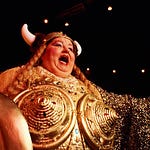
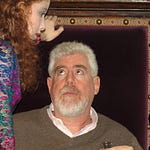
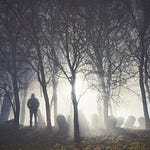

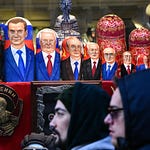

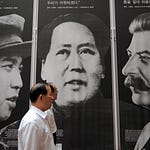
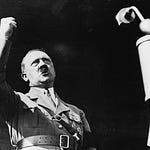
The Outsider